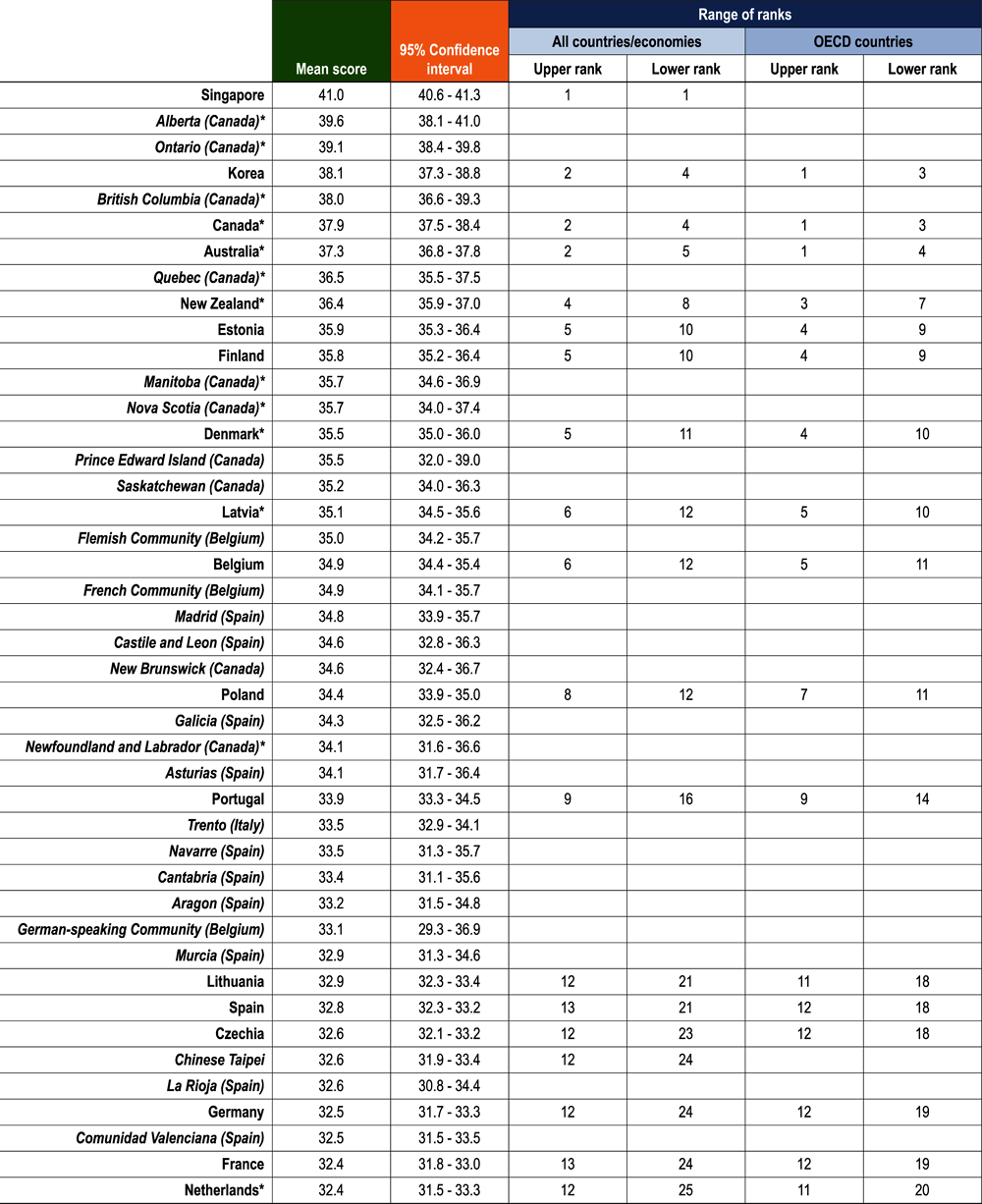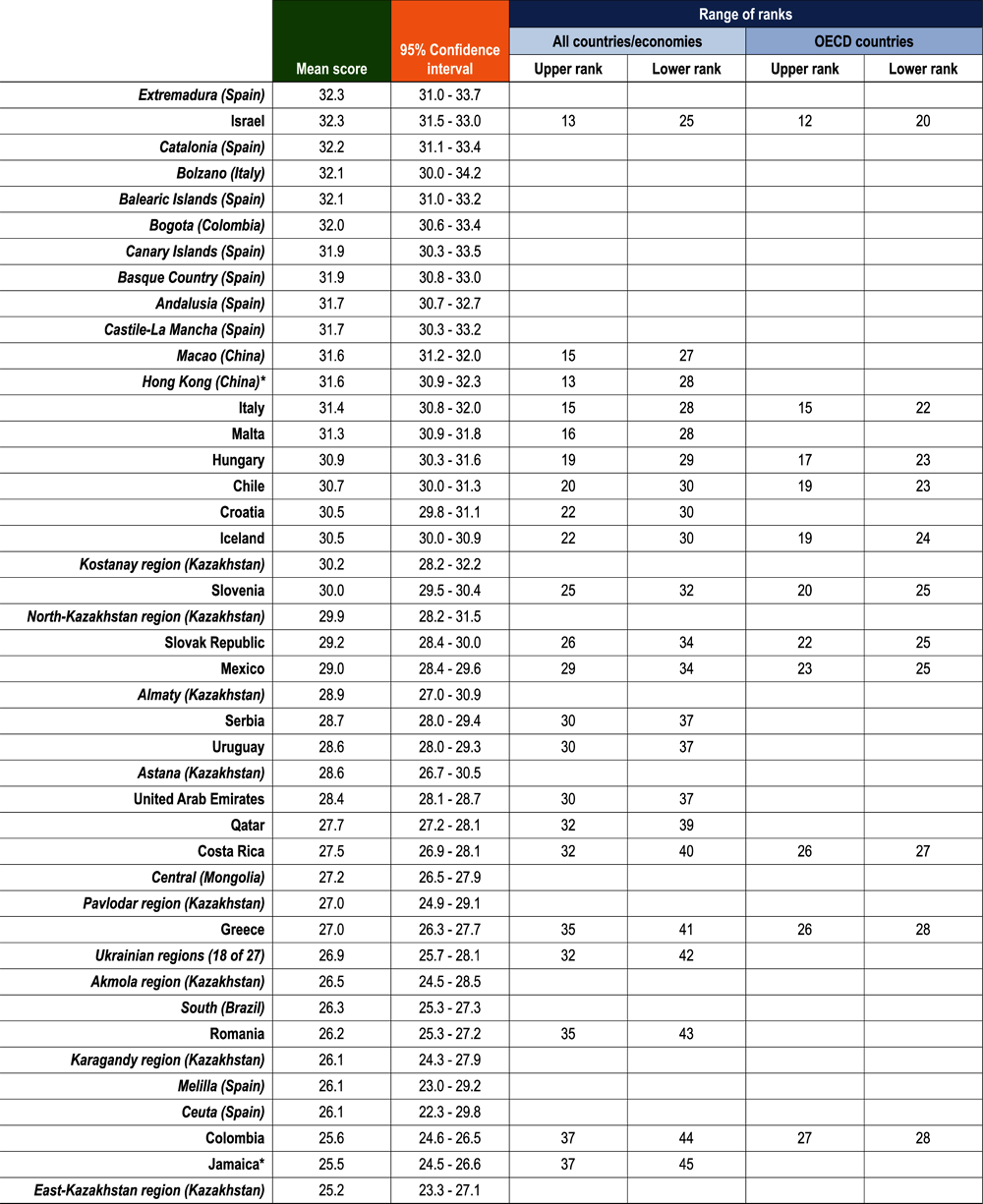The goal of PISA is to provide useful information to educators and policy makers on the strengths and weaknesses of their country’s education system, their progress made over time, and opportunities for improvement. When ranking countries’ and economies’ student performance in PISA, it is important to consider the social and economic context of schooling. Moreover, many countries and economies score at similar levels in the PISA test; small differences that are not statistically significant or practically meaningful should not be considered (see Reader’s Guide).
Table III.A7.1. shows an estimate for each country and economy of where its mean performance ranks among all other countries and economies that participated in the PISA 2022 Creative Thinking assessment as well as, for OECD countries, among all OECD countries. Because mean-score estimates are derived from samples and are thus associated with statistical uncertainty, it is often not possible to determine an exact ranking for all countries and economies. However, it is possible to identify the range of possible rankings for the country’s or economy’s mean performance. Only the differences that are statistically significant should be considered when comparing mean performance across countries/economies [see Box 1 in Reader’s Guide]). This range of rankings can be wide, particularly for countries/economies whose mean scores are similar to those of many other countries/economies.
Table III.A7.1. also includes the results of provinces, regions, states or other subnational entities within the country for countries where the sampling design supports such reporting. For these subnational entities, a ranking order was not estimated. However, the mean score and its confidence interval allow the performances of subnational entities and countries/economies to be compared.



